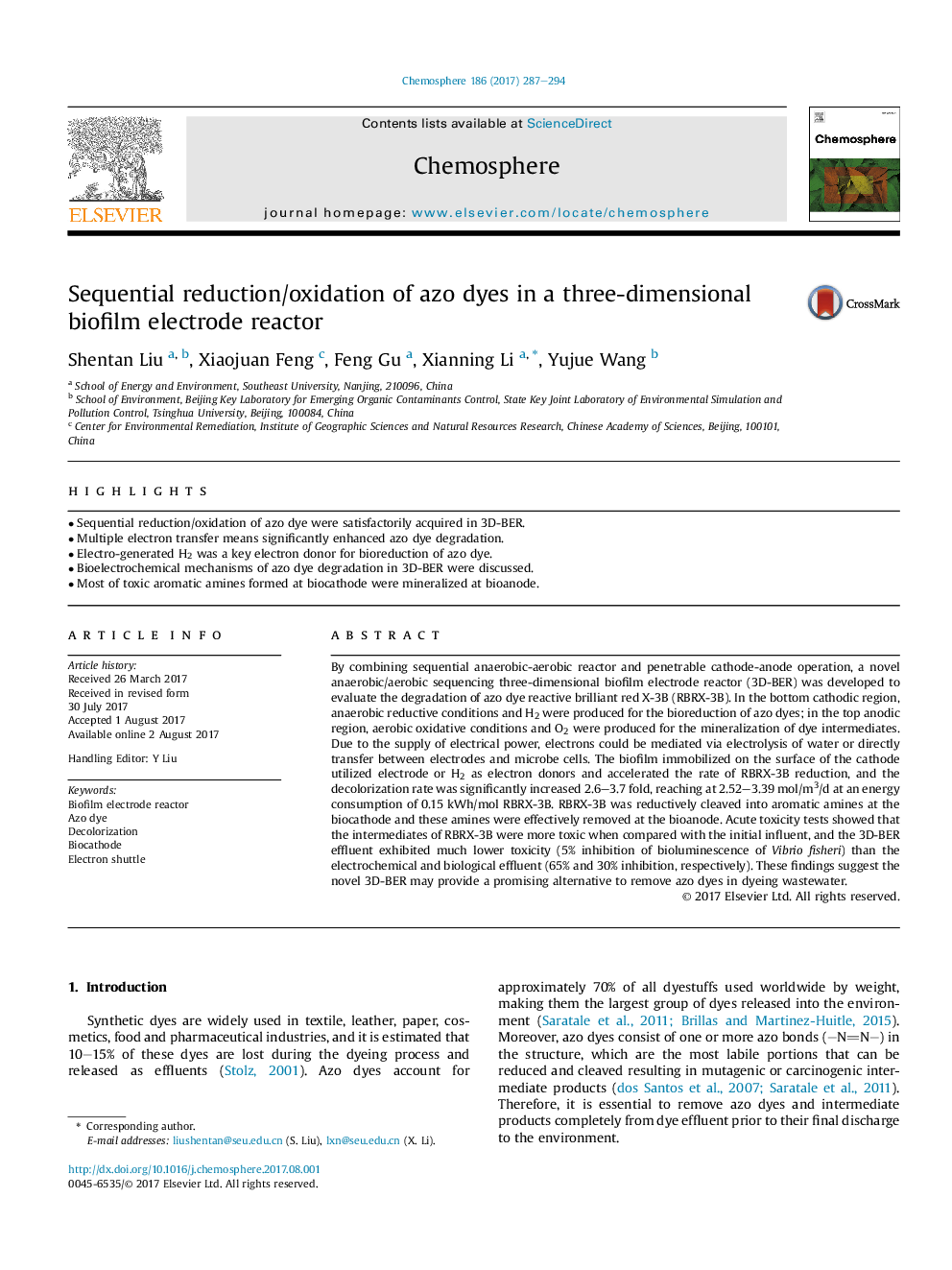| کد مقاله | کد نشریه | سال انتشار | مقاله انگلیسی | نسخه تمام متن |
|---|---|---|---|---|
| 5746088 | 1618785 | 2017 | 8 صفحه PDF | دانلود رایگان |
- Sequential reduction/oxidation of azo dye were satisfactorily acquired in 3D-BER.
- Multiple electron transfer means significantly enhanced azo dye degradation.
- Electro-generated H2 was a key electron donor for bioreduction of azo dye.
- Bioelectrochemical mechanisms of azo dye degradation in 3D-BER were discussed.
- Most of toxic aromatic amines formed at biocathode were mineralized at bioanode.
By combining sequential anaerobic-aerobic reactor and penetrable cathode-anode operation, a novel anaerobic/aerobic sequencing three-dimensional biofilm electrode reactor (3D-BER) was developed to evaluate the degradation of azo dye reactive brilliant red X-3B (RBRX-3B). In the bottom cathodic region, anaerobic reductive conditions and H2 were produced for the bioreduction of azo dyes; in the top anodic region, aerobic oxidative conditions and O2 were produced for the mineralization of dye intermediates. Due to the supply of electrical power, electrons could be mediated via electrolysis of water or directly transfer between electrodes and microbe cells. The biofilm immobilized on the surface of the cathode utilized electrode or H2 as electron donors and accelerated the rate of RBRX-3B reduction, and the decolorization rate was significantly increased 2.6-3.7 fold, reaching at 2.52-3.39Â mol/m3/d at an energy consumption of 0.15Â kWh/mol RBRX-3B. RBRX-3B was reductively cleaved into aromatic amines at the biocathode and these amines were effectively removed at the bioanode. Acute toxicity tests showed that the intermediates of RBRX-3B were more toxic when compared with the initial influent, and the 3D-BER effluent exhibited much lower toxicity (5% inhibition of bioluminescence of Vibrio fisheri) than the electrochemical and biological effluent (65% and 30% inhibition, respectively). These findings suggest the novel 3D-BER may provide a promising alternative to remove azo dyes in dyeing wastewater.
Journal: Chemosphere - Volume 186, November 2017, Pages 287-294
